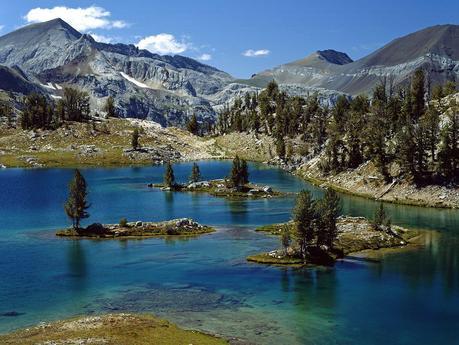
Glacier Lake, Wallowa Whitman National Forest, Eagle Cap Wilderness Area, Oregon (Ecard Media)
by Rob Davis / The Oregonian
The U.S. Forest Service has tightened restrictions on media coverage in vast swaths of the country’s wild lands, requiring reporters to pay for a permit and get permission before shooting a photo or video in federally designated wilderness areas.
Under rules being finalized in November, a reporter who met a biologist, wildlife advocate or whistleblower alleging neglect in any of the nation’s 100 million acres of wilderness would first need special approval to shoot photos or videos even on an iPhone.
Permits cost up to $1,500, says Forest Service spokesman Larry Chambers, and reporters who don’t get a permit could face fines up to $1,000.
First Amendment advocates say the rules ignore press freedoms and are so vague they’d allow the Forest Service to grant permits only to favored reporters shooting videos for positive stories.
“It’s pretty clearly unconstitutional,” said Gregg Leslie, legal defense director at the Reporters Committee for Freedom of the Press in Alexandria, Va. “They would have to show an important need to justify these limits, and they just can’t.”
Liz Close, the Forest Service’s acting wilderness director, says the restrictions have been in place on a temporary basis for four years and are meant to preserve the untamed character of the country’s wilderness.
Close didn’t cite any real-life examples of why the policy is needed or what problems it’s addressing. She didn’t know whether any media outlets had applied for permits in the last four years.
She said the agency was implementing the Wilderness Act of 1964, which aims to protect wilderness areas from being exploited for commercial gain.
“It’s not a problem, it’s a responsibility,” she said. “We have to follow the statutory requirements.”
The Forest Service’s previous rules caused a fuss in 2010, when the agency refused to allow an Idaho Public Television crew into a wilderness area to film student conservation workers. The agency ultimately caved to pressure from Idaho Gov. C.L. “Butch” Otter.
With smartphones blurring the lines between reporters and camera crews, U.S. Sen. Ron Wyden, an Oregon Democrat, said the agency should tread more carefully.
“The Forest Service needs to rethink any policy that subjects noncommercial photographs and recordings to a burdensome permitting process for something as simple as taking a picture with a cell phone,” Wyden said. “Especially where reporters and bloggers are concerned, this policy raises troubling questions about inappropriate government limits on activity clearly protected by the First Amendment.”
Most of the country’s wilderness is in the West. Nearly 50 wilderness areas have been designated in Oregon, including wide stretches of land around Mount Hood, Mount Jefferson and Mount Washington.
The rules allow exceptions only for breaking news coverage of events like fires and rescues. They’re more stringent than similar policies on wilderness areas managed by a different federal agency, the Bureau of Land Management.
The BLM does not require any special permit for newsgathering in wilderness areas.
By contrast, the Forest Service is giving its supervisors discretion to decide whether a news outlet’s planned video or photo shoots would meet the Wilderness Act’s goals.
“If you were engaged on reporting that was in support of wilderness characteristics, that would be permitted,” Close said.
The First Amendment prohibits the creation of laws that abridge press freedom. Asked whether the Forest Service believes its rule violates the First Amendment, Close replied: “It does not apply to breaking news.”
Reporters have many more reasons to go into wilderness areas, however, than just to cover fires, rescues or other breaking events.
The Forest Service is currently accepting public comment on its proposal. Those interested can comment online here.

